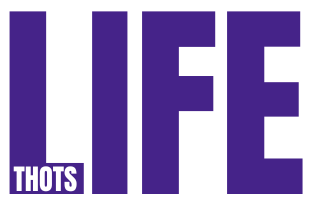Let’s be honest-most of us have walked past a poster and barely noticed it. Not because it wasn’t colorful or bold, but because it didn’t feel like anything. No personality, no cohesion, no brand presence. That’s exactly what happens when you don’t have a solid brand style guide, especially when it comes to something as visual and public-facing as a poster design.
Whether you’re a startup trying to make a splash or a seasoned brand preparing for your next campaign, nailing down a consistent look and feel is non-negotiable.
And in the print world, where every pixel translates to paper, having a defined guide becomes even more crucial.
By the way, if you’re already thinking about how your posters will look in real life, don’t forget to check out various posters printing offerings that align with your brand specs-because consistency extends from digital to physical too.
So let’s break it down-what goes into an effective brand style guide tailored for poster design?
What Is a Brand Style Guide?
A brand style guide (sometimes called a brand manual or brand book) is a document that outlines how your brand looks, feels, and sounds. It sets the rules for how your logo, colors, typography, images, and voice should be used across all marketing materials-including, of course, posters.
Think of it as the instruction manual for your brand’s personality. Without it, different designers or teams might interpret your brand differently, resulting in a jumbled message. And in poster design, where space is limited and impact is everything, even one inconsistent element can dilute your message.
Why You Need a Style Guide for Posters

You might think: “Do I really need a whole guide just for posters?” Short answer: yes.
Here’s why it matters:
- Instant Recognition: A consistent design language helps your audience recognize your brand at a glance-essential for printed posters displayed in high-traffic areas.
- Design Efficiency: It saves time for your designers by eliminating guesswork.
- Professionalism: It ensures your posters always look polished and aligned with your other marketing materials.
- Print Consistency: Print has different rules than digital, so it’s essential to lock in specs like CMYK values, image resolution, and bleed margins.
Core Elements of a Poster-Focused Brand Style Guide
Let’s walk through the essential components you should include in a style guide built with poster design in mind.
1. Logo Usage
Your logo is your brand’s handshake-make it count.
- Primary and Secondary Logos: Show both full and simplified versions.
- Size and Placement: Define minimum size and positioning (e.g., always top right, or centered).
- Clear Space: Specify how much padding to leave around the logo.
- Do’s and Don’ts: Show examples of correct and incorrect logo usage.
Pro Tip: Always use vector formats (.AI or .EPS) for printing to maintain crisp quality.
2. Color Palette
Posters are meant to grab attention-color plays a starring role here.
- Primary Brand Colors: Include HEX, RGB, and CMYK values.
- Accent Colors: Add optional colors for variety.
- Background Colors: Suggest colors suitable for poster backdrops.
Make sure your color contrast meets accessibility standards (e.g., sufficient contrast for readability).
Real-World Insight: According to Canva, color improves brand recognition by up to 80%. That’s huge in the crowded world of physical posters.
3. Typography Rules
Fonts speak louder than words-literally.
- Headline Fonts: Bold, attention-grabbing typefaces for titles.
- Body Fonts: Clean, readable fonts for details.
- Font Hierarchy: Define font sizes, weights, and spacing.
- Alignment and Spacing: Standardize margins and text spacing to ensure visual harmony.
Avoid using too many fonts. Stick to 2–3 typefaces max for posters.
4. Imagery Guidelines
Pictures can sell a mood in a single glance.
- Photography Style: Bright and lifestyle-based? Dark and moody? Be specific.
- Illustration Style: Flat design, hand-drawn, 3D? Keep it cohesive.
- Filters or Treatments: Define any custom color grading or overlays used in images.
Also, include resolution requirements-300 DPI is a must for print.
5. Brand Voice and Messaging
Posters need to say a lot with very few words.
- Tone of Voice: Are you formal, playful, bold, or poetic?
- Key Phrases or Taglines: Define messaging that reflects brand values.
- Call to Action (CTA): What do you want people to do when they see the poster? Make sure it’s clear and punchy.
Keep messages short and high-impact. Posters are not blogs!
6. Layout Examples
This is where things get super practical.
Include mockups or real-life examples of poster layouts:
- Event posters
- Product launch posters
- Seasonal campaign posters
- Informational posters
For each, specify:
- Grid systems
- Margins and padding
- Balance of text vs. visuals
- CTA placement
Pro Tip: Use templates. They streamline design while keeping everything on-brand.
Final Thoughts
Your poster isn’t just a one-time advertisement. It’s a piece of your brand’s visual legacy. And without a thoughtful, detailed style guide, you risk diluting that legacy every time you go to print.
By creating a poster-specific brand style guide, you’re not just helping your designers-you’re building brand equity, campaign after campaign.
So go ahead, lay down those rules, get input from your printer, and make sure every poster you put out into the world looks, feels, and sounds like your brand. That’s how you make an impression that lasts.

